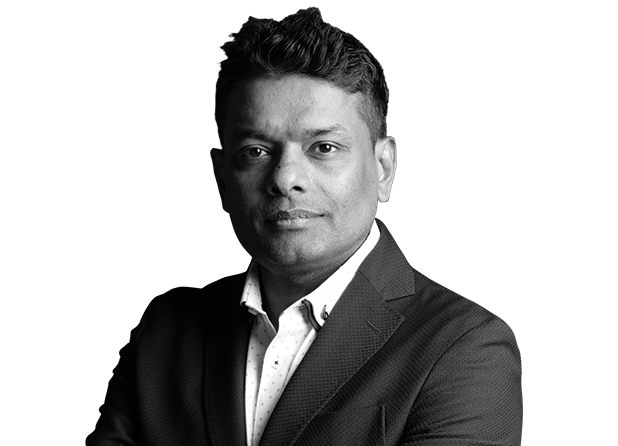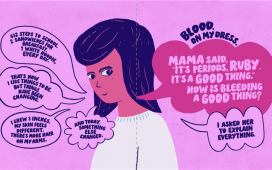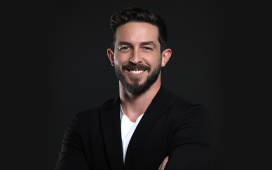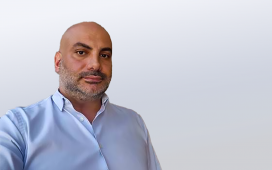By Shyam Sunder, marketing consultant

As 2022 emerges, and the world keeps taking two steps forward and one step back. The dust is settling down in the ever-evolving world of best marketing practices to drive growth
During Campaign’s recent Marcomms360 – Predictions 2022 event, I had the privilege of presenting some bare truths and hard choices that confront marketers on a regular basis. These ‘contradictions’, shared to a packed and attentive audience, stemmed from my recent consulting experiences across F&B, healthcare and now the travel sector, where the same questions surfaced time and again with no clear choices
Here are the hard choices we will continue to face while launching and building brands in the next 12 months, and sometimes forever:
1. Left brain vs right brain: I am sure many of us are blessed or simply forced to balance the use of both sides of the single biggest asset mankind has – our brain – in our daily lives. But those good in both creativity and imagination (skills derived from the right brain) as well as in strategy and analytics (skills derived from the left brain) over a period of time will be seen as generalists in a world increasingly driven by specialists. When it comes to choosing one over the other to recruit or build a team focused on one of the skills, where do you stand, considering the needs of your business? And why?
2. Effectiveness vs efficiency: The obvious answer is that marketing needs to be effective to be even noticed as one scrolls down one’s feed or swipes up stories, as much as efficient to be able to reach or retarget the right audience on the right platform at the right time. But if you have a dollar to invest in one of them, then which?
3. Top vs bottom-funnel: While we seem to have mid-funnel tactics and bottom-funnel remarketing strategies in place, the big question is about the efforts, the talent and the investment needed for creating the required awareness and reach and the creativity needed to grab attention and elicit desire at the top of the funnel. The question of where to focus and invest keeps popping up.
4. Bricks vs clicks: An omnichannel approach to marketing for businesses having a multichannel presence is surely the way to go, but many times a hard choice needs to be made on where to invest your resources and time considering where the profits lie. Any multichannel retailer will tell you that the large volumes and profits lie in the physical stores, as compared to digital, and therefore while executing multichannel campaigns the hard choice for marketers will be what is the best media mix that works for physical stores as compared to digital? If limited in budgets, where do you invest?
5. Digital vs traditional media: How much does a digital-only marketing effort help in achieving top-funnel objectives and how much does amplification on traditional media help? Research across the world and in our region has proven the winning combination of television and digital or outdoor and digital for maximising reach and impact. Again, the ideal scenario is that you have sufficient budgets to distribute your spend across key channels – but if don’t, then come the hard choices. More often than not, businesses – especially pure-play e-commerce brands with limited budgets – sacrifice the use of traditional media completely.
6. D2C vs D2B: With marketplaces and aggregators dominating the landscape, the big question, especially for small and medium-sized businesses, is: Do we build our brand directly with customers or take the marketplace route and save on marketing, channel, merchandising and supply chain investments? I am witnessing more and more brands taking the easy way out of adopting a D2B strategy for short-term business goals, forsaking the long-term value of building a valuable asset and owning customer data
7. Local vs global: A constant debate, especially in fashion and lifestyle marketing, is how much of the creative and content must reflect international imagery and how much local? For global brands, their challenge lies in how much the creative assets they inherit from principals will connect with local audiences. When it comes to home-grown businesses that aspire to pitch their brands in the international landscape, the question is how to balance the mix across the year.
8. Insource vs outsource: To be specific outsourcing of creative talent is the big debate and several businesses, especially start-ups and tech companies that are obsessed with insourcing all talent, simply refuse to accept that attracting good creative talent on the client’s side is not just impossible but also unsustainable. Most of them then compromise by sourcing mediocre talent and the creative work speaks for itself.
9. Physical vs virtual: Over the last 18 months, all of us have experienced the new ways of working and have our own views on the benefits and issues of physical and virtual meetings. Most of us are going to adjust to the hybrid way of working. From a non-verbal, emotional, sensitive and true human-relationship-building perspective, we realise our physical presence at our workplace matters as it helps foster ideas and creativity. The debate for 2022 will be how to best balance physical and virtual ways of working.











